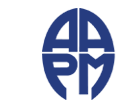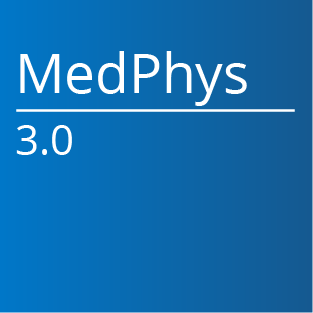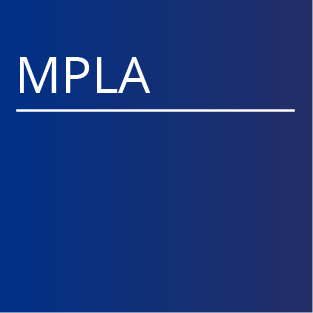Error Management and Patient Safety
The following links are to documents and educational material in the area of error management and patient safety in radiotherapy. Suggestions for additional links to other relevant information should be made to the Chair of AAPM’s Working Group on the Prevention of Errors in Radiation Oncology. If you are a non-member, you may contact the AAPM Headquarters office at 571-298-1300 for their contact information.
Psychology of Human Error
- Reason J. Human Error. Cambridge, England: Cambridge University Press; 1990. https://www.ncbi.nlm.nih.gov/pmc/articles/PMC1070929/
- Hallinan J. Why We Make Mistakes. New York, NY: Broadway Books; 2010. https://www.penguinrandomhouse.com/books/73874/why-we-make-mistakes-by-joseph-t-hallinan/9780767928069/
- Norman D. The Design of Everyday Things. New York, NY: Basic Books; 2013. http://www.nixdell.com/classes/HCI-and-Design-Spring-2017/The-Design-of-Everyday-Things-Revised-and-Expanded-Edition.pdf
- Kahneman D. Thinking, Fast and Slow. New York, NY: Farrar, Straus and Giroux; 2013 https://us.macmillan.com/books/9780374533557
Incident reports and descriptions
- Jairam, V. et al, Error Types and Associations of Clinically Significant Events Within Food and Drug Administration Recalls of Linear Accelerators and Related Products. Pract Radiat Oncol. 2020; 10: e8–e15. https://doi.org/10.1016/j.prro.2019.08.001
- Bogdanich W. Radiation Offers New Cures, and Ways to Do Harm. New York, NY: New York Times: 2010: 1.
- Bogdanich W. As Technology Surges, Radiation Safeguards Lag. New York, NY: New York Times: 2010: A1.
- Bogdanich W. A Pinpoint Beam Strays Invisibly, Harming Instead of Healing. New York, NY: New York Times: 2010.
- Bogdanich W. Radiation Errors Reported in Missouri. New York, NY: New York Times: 2010: A17.
- Oved MC. Radiotherapy error could affect hundreds. USA Today. June 14, 2007; Health & Behaviour.
- Richardson S. A 2-year review of recent Nuclear Regulatory Commission events: What errors occur in the modern brachytherapy era? Pract Radiat Oncol. 2012; 2: 157 – 163. https://doi.org/10.1016/j.prro.2011.08.004
- International Atomic Energy Agency. Lessons Learned from Accidental Exposures in Radiotherapy, Safety Reports Series No. 17. IAEA, Vienna: 2000. https://www-pub.iaea.org/MTCD/Publications/PDF/Pub1084_web.pdf
- NRC Information Notice 2013-15: Importance of verification of treatment parameters for high dose-rate remote afterloader administrations. NRC, Washington DC: 2013 https://www.nrc.gov/docs/ML1305/ML13058A306.pdf
- ROILS Quarterly Reports, https://www.astro.org/Patient-Care-and-Research/Patient-Safety/RO-ILS/RO-ILS-Education
Guidelines
- Kohn LT, Corrigan JM, Donaldson MS, eds. To Err is Human: Building a Safer Health System. National Academy of Sciences. 2000. http://www.nationalacademies.org/hmd/~/media/Files/Report%20Files/1999/To-Err-is-Human/To%20Err%20is%20Human%201999%20%20report%20brief.pdf
- Pawlicki T, Smith B, Hayman J, Ford E, eds. Safety is No Accident: A Framework for Quality Radiation Oncology and Care. American Society for Radiation oncology. 2019. https://www.astro.org/Patient-Care-and-Research/Patient-Safety/Safety-is-no-Accident
- Barton M, Shafiq J, eds. Radiotherapy Risk Profile: Technical Manual. World Health Organization. 2012. https://www.who.int/patientsafety/activities/technical/radiotherapy_risk_profile.pdf
- Ortiz Lopez P, Cosset JM, Dunscombe P, et al. ICRP Publication 112: Preventing Accidental Exposures from new External Beam Radiation Therapy Technologies. International Commission on Radiological Protection. 2009.
Safety culture – General
- Pawlicki T, Mundt A. Quality in radiation oncology. Med Phys. 2007; 34 (5): 1529 – 1534. https://doi.org/10.1118/1.2727748
- Hendee WR, Herman MG. Improving patient safety in radiation oncology. Med Phys. 2011; 38: 78 – 82. https://doi.org/10.1118/1.3522875
- Mardon RE, Khanna K, Sorra J, Dyer N, Famolaro T. Exploring relationships between hospital patient safety culture and adverse events. J Patient Saf. 2010; 6: 226 – 232. https//doi.org/10.1097/PTS.0b013e3181fd1a00
- Dominello MM, Paximadis PA, Zaki M, et al. Ten-year trends in safe radiation therapy delivery and results of a radiation therapy quality assurance intervention. Int J Radiat Oncol Biol Phys. 2015; 93: E501 – E502. https://doi.org/10.1016/j.prro.2015.08.004
Safety culture – Checklist
- Gawande A. The Checklist Manifesto: How to Get Things Right. New York, NY: Metropolitan Books; 2009.
- Fong de los Santos L, Evans S, eds. Medical Physics Practice Guideline 4.a: Development, implementation, use and maintenance of safety checklists. J Appl Clin Med Phys. 2015; 16 (3): 37 – 59. https://doi.org/10.1120/jacmp.v16i3.5431
Safety culture – Teamwork
- Gordon S, Mendenhall P, O’Connor BB. Beyond the Checklist: What Else Health Care Can Learn from Aviation Teamwork and Safety. Ithaca, NY: Cornell University Press; 2013. http://www.cornellpress.cornell.edu/book/?GCOI=80140100761730
- Potters L, Kapur A. Implementation of a “No Fly” safety culture in a multicenter radiation medicine department. Pract Radiat Oncol. 2012; 2: 18 – 26. https://doi.org/10.1016/j.prro.2011.04.010
- Marks L, Adams R, Pawlicki T, et al. Enhancing the role of case- oriented peer review to improve quality and safety in radiation oncology: Executive summary. Pract Radiat Oncol. 2013; 3: 149 – 156. https://doi.org/10.1016/j.prro.2012.11.010
- Sundararaman. S. et al, Improving patient safety in the radiation oncology setting through crew resource management, Pract Radiat Oncol. 2014; 4: e181-e188. https://doi.org/10.1016/j.prro.2013.09.003
- Cox, B. et al. Prospective Peer Review in Radiation Therapy Treatment Planning: Long-Term Results From a Longitudinal Study. Pract Radiat Oncol. In press 2020. https://doi.org/10.1016/j.prro.2019.10.008
- Stachelek, G. et al. Improvements in Physician Clinical Workflow Measures After Implementation of a Dashboard Program Pract Radiat Oncol. 2020;10:151-157. https://doi.org/10.1016/j.prro.2019.11.014
Safety culture – Training
- Keith N, Frese M. Self-regulation in error management training: emotion control and metacognition as mediators of performance effects. J Appl Psychol. 2005; 90 (4): 677 – 691. http://dx.doi.org/10.1037/0021-9010.90.4.677
- Keith N, Frese M. Effectiveness of error management training: a meta-analysis. J Appl Psychol. 2008; 93 (1): 59 – 69. http://dx.doi.org/10.1037/0021-9010.93.1.59
- Ford E, Nyflot M, Spraker M, et al. A patient safety education program in medical physics residency. J Appl Clin Med Phys. 2017; 18 (6): 268 – 274. https://doi.org/10.1002/acm2.12166
- Training Slide Set developed by the IAEA, includes section on prevention of accidental exposure, https://www.iaea.org/resources/rpop/resources/training-material
Safety Culture – Incident learning
- Ford E, Evans S. Incident learning in radiation oncology: a review. Med Phys. 2018; 45: e100 – e119. https://doi.org/10.1002/mp.12800
- Ford E, Fong de Los Santos L, Pawlicki T, Sutlief S, Dunscombe P. Consensus recommendations for incident learning database structures in radiation oncology. Med Phys. 2012; 19: 7272 – 7290. https://doi.org/10.1118/1.4764914
- Stavropoulou C, Doherty C, Tosey P. How effective are incident-reporting systems for improving patient safety? A systematic literature review. Milbank Q. 2015; 93: 826 – 866. https://doi.org/10.1111/1468-0009.12166
- Paradis, K. et al. The Fusion of Incident Learning and Failure Mode and Effects Analysis for Data-Driven Patient Safety Improvements. Pract Radiat Oncol. In press 2020. https://doi.org/10.1016/j.prro.2020.02.015
- Judy, G. et al. Incorporating Human Factors Analysis and Classification System (HFACS) Into Analysis of Reported Near Misses and Incidents in Radiation Oncology. Pract Radiat Oncol. In press 2020. https://doi.org/10.1016/j.prro.2019.09.005
Risk assessment tools – Process mapping & Other Tools
- Damato A, Cormack R, Bhagwat M, et al. Redesign of process map to increase efficiency: reducing procedure time in cervical-cancer brachytherapy. Brachytherapy. 2015; 15 (4): 471 – 480. https://doi.org/10.1016/j.brachy.2014.11.016
- Hartvigson. P.E., et al. A Radiation Oncology–Specific Automated Trigger Indicator Tool for High-Risk, Near-Miss Safety Events Pract Radiat Oncol. 2020; 10:,142–150. https://doi.org/10.1016/j.prro.2019.10.017
- Mullins, B. et al. Human Error Bowtie Analysis to Enhance Patient Safety in Radiation Oncology Pract Radiat Oncol. 2019; 9: 465-478. https://doi.org/10.1016/j.prro.2019.06.022
Risk assessment tools – Failure mode and effects analysis
- Huq MS, Fraass B, Dunscombe P, et al. The report of Task Group 100 of the AAPM: Applications of risk analysis methods to radiation therapy quality management. Med Phys. 2016; 43 (7): 4209 – 4262. https://doi.org/10.1118/1.4947547
- Thomadsen B, ed. Quality and Safety in Radiotherapy: Learning the New Approaches in Task Group 100 and Beyond – 2013 Summer School Proceedings. Madison, WI: Medical Physics Publishing Inc.; 2013.
- Kisling, K., Johnson, J, et al. A risk assessment of automated treatment planning and recommendations for clinical deployment. Med. Phys. June 2019 46 (6): 2567-2574. https://doi.org/10.1002/mp.13552
- Rusu, I. et al. Failure mode and effects analysis of linac-based liver stereotactic body radiotherapy. Med. Phys. March 2020 47 (3): 937-947. https://doi.org/10.1002/mp.13965
Risk assessment tools – Fault tree analysis
- Manger R, Paxton A, Pawlicki T, Kim GY. Failure mode and effects analysis and fault tree analysis of surface image guided cranial radiosurgery. Med Phys. 2015; 42 (5): 2449 – 2461. https://doi.org/10.1118/1.4918319
Risk assessment tools – Root cause analysis
- VA National Center for Patient Safety RCA Step-By-Step Guide REV.07.01.16 Root Cause Analysis Step by Step Guide. https://www.patientsafety.va.gov/docs/RCA_Step_By_Step_Guide_REV7_1_16_FINAL.pdf
- Rooney J, Vanden Heuvel LN. Root cause analysis for beginners. Quality Progress. 2004; July: 45 – 53. https://www.env.nm.gov/aqb/Proposed_Regs/Part_7_Excess_Emissions/NMED_Exhibit_18-Root_Cause_Analysis_for_Beginners.pdf
- Williams P. Techniques for root cause analysis. BUMC Proceedings. 2001; 14: 154 – 157. PMID: 16369607 https://www.ncbi.nlm.nih.gov/pmc/articles/PMC1292997/
Risk assessment tools – System control theory
- Pawlicki T, Samost A, Brown D, et al. Application of systems and control theory-based hazard analysis to radiation oncology. Med Phys. 2016; 43 (3): 1514 – 1530. https://doi.org/10.1118/1.4942384
- Leveson N, Engineering a Safer World: Systems Thinking Applied to Safety. Cambridge, MA: MIT Press; 2011. https://mitpress.mit.edu/books/engineering-safer-world
Well-Being and Resilience
- Johnson, J., Ford, E. et. Al. Peer support: A needs assessment for social support from trained peers in response to stress among medical physicists. J Appl Clin Med Phys. 2019; 20 (9): 157-162. https://doi.org/10.1002/acm2.12675
- Mazur LM, Mosaly PR, Jackson M, et al. Quantitative assessment of workload and stressors in clinical radiation oncology. Int J Radiat Oncol Biol Phys. 2012; 83(5): e571-576. http://doi.org/10.1016/j.ijrobp.2012.01.063
- Wu AW, Shapiro J, Harrison R, et al. The impact of adverse events on clinicians: what's in a name? J Patient Saf. 2017; Online only. DOI: 10.1097/PTS.0000000000000256 https://www.ncbi.nlm.nih.gov/pubmed/29112025
- Shanafelt TD, Noseworthy JH. Executive leadership and physician well-being: nine organizational strategies to promote engagement and reduce burnout. Mayo Clin Proc. 2017; 92(1): 129 – 146. https://doi.org/10.1016/j.mayocp.2016.10.004
- S.A. Hewlett and C.B. Luce, Extreme jobs: the dangerous allure of the 70-hour workweek. Harv. Bus. Rev. 2006; 84 (12): 49 – 59. PMID: 17183793 https://hbr.org/2006/12/extreme-jobs-the-dangerous-allure-of-the-70-hour-workweek
- Conway J, Federico F, Stewart K, Campbell MJ. Respectful management of serious clinical adverse events (Second Edition). Institute for Healthcare Improvement. 2011. http://www.ihi.org/resources/Pages/IHIWhitePapers/RespectfulManagementSeriousClinicalAEsWhitePaper.aspx
- Sheridan, Thomas. Risk, Human Error, and Systems Resilience: Fundamental Ideas. Hum Factors. 2008 Jun;50(3):418-26. https://doi.org/10.1518%2F001872008X250773
Related Quotes
- “We can’t change the human condition, but we can change the conditions under which humans work” – James Reason regarding improving a system’s robustness to human error by addressing environmental factors.
- “Errors happen in environments that allow them to happen.” – James Reason regarding latent failures which pose the greatest threat for a complex system.
- “No amount of feedback will enhance safety unless information is acted upon in a timely and effective manner.” James Reason regarding incident learning systems and the necessity of proper corrective actions.
- “Every system is perfectly designed to achieve the results it achieves.” – Donald Berwick regarding the importance of design.
- “If you don’t find it often, you often don’t find it.” – Joseph Hallinan regarding the difficulty of detecting an infrequent error.
- “Man is fallible, maybe men are less so.” – Atul Gawande regarding peer review and teamwork.



















